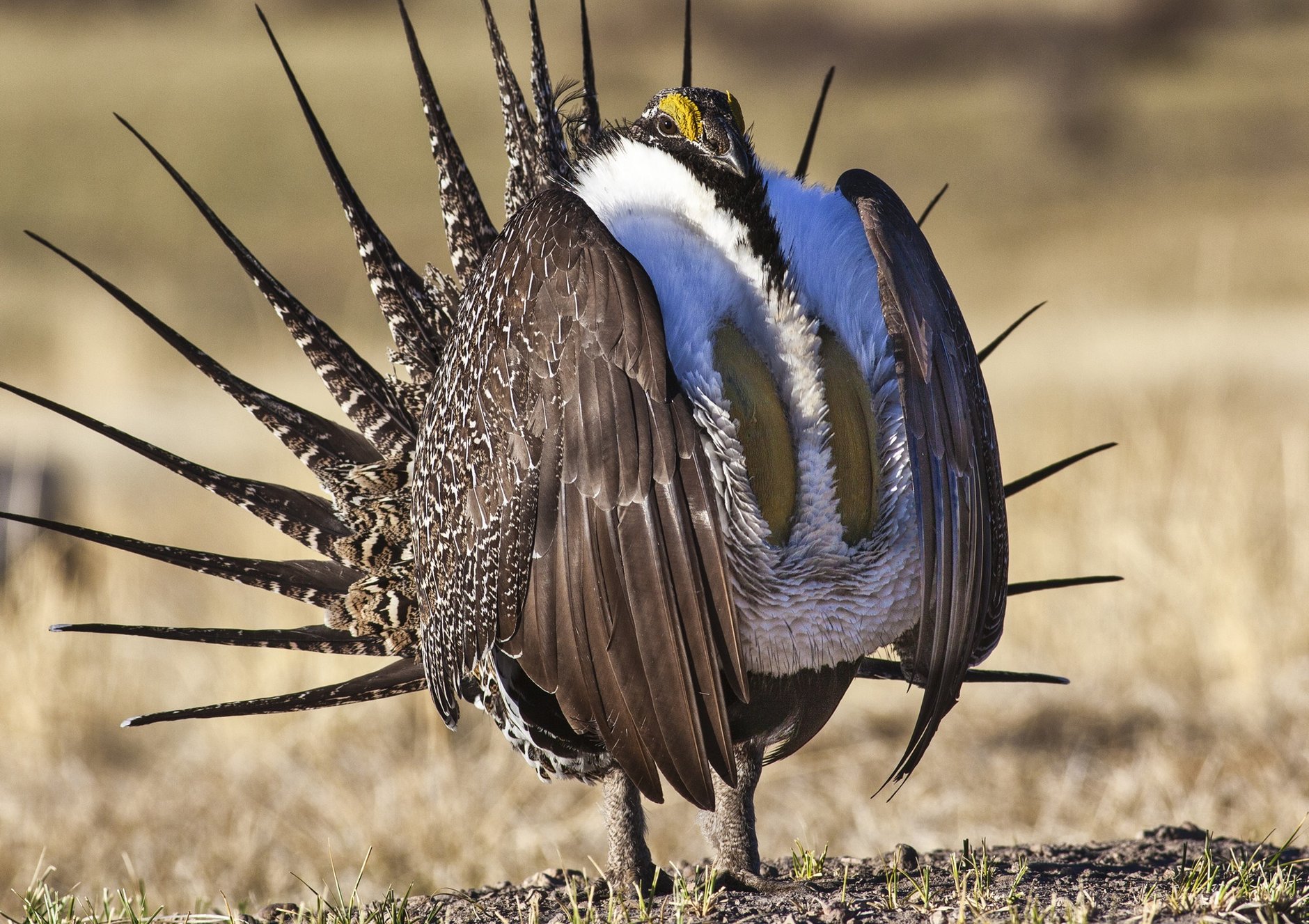(CN) — After more than half a decade of legal feuding, a federal judge Monday sided with conservationists in their challenge to the government’s efforts to deny the bi-state sage grouse protections under the Endangered Species Act.
Home in the southwestern corners of the California-Nevada border, bi-state sage grouse have become a symbol of America’s rural rangeland, with their stocky chests decorated in brilliant plumage — put to good use in drawing the gaze of a potential mate.
But experts have warned for years that their population is dwindling. Housing developments, mining practices and cattle grazing have taken a toll and led the U.S. Fish and Wildlife Service to agree to list the bird as a threatened species in 2013.
For nearly seven years, however, the feds have tried to renege on that promise. The most recent attempt came in 2020, when the Trump administration said it would withdraw from the agreement to provide protections to the sage grouse.
The move sparked immediate pushback from conservationists, who took the feds to court and claimed the delisting decision flies in the face of sound science.
On Monday, a judge agreed with the plaintiffs. In a 31-page order, U.S. District Judge Jacqueline Scott Corley granted summary judgment to the conservationists, finding that the feds failed to look at the whole picture.
“By simply dismissing the relevant data, rather than ‘disagreeing with or discrediting’ it, the Service ignored the best available data,” Corley wrote.
The judge found that the feds made a series of miscalculations in their assessment and cherry-picked data relating to population management units. The units are methods of measuring six specific locations with sage grouse in order to see how their seasonal habits and population change with time.
The judge also found that the feds didn’t have enough evidence to support their conclusion that the effective population size for the birds was above the threshold for viability. This in turn led them to determine that sage grouse were unlikely to become an endangered species within the foreseeable future throughout most of their habitat.
“These combined errors undercut the Service’s broader conclusion that the bi-state sage grouse population is stable, that the portions where it is likely to be extirpated are not significant, and that its conservation measures will reduce one or more threats enough so that the bi-state sage grouse is not threatened,” the ruling states.
The judge vacated the 2020 decision to withdraw sage grouse protections proposal and sent the feds back to the drawing board to issue a fresh listing decision.
Subscribe to Closing Arguments
Sign up for new weekly newsletter Closing Arguments to get the latest about ongoing trials, major litigation and hot cases and rulings in courthouses around the U.S. and the world.








